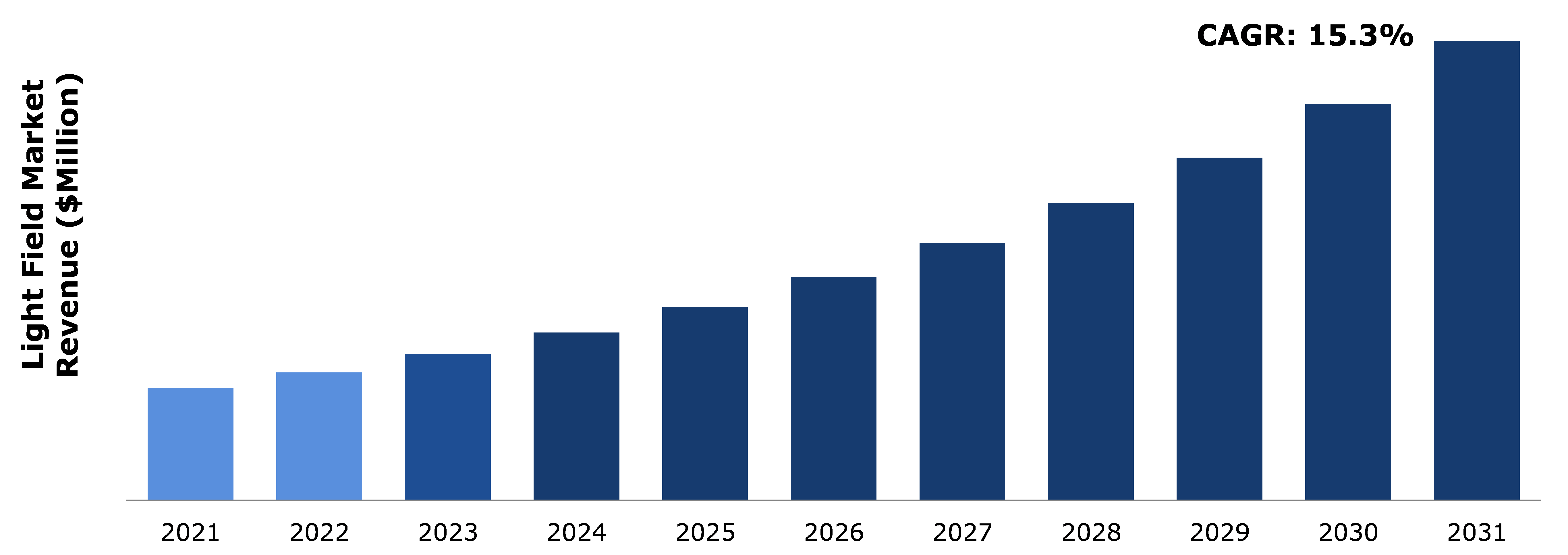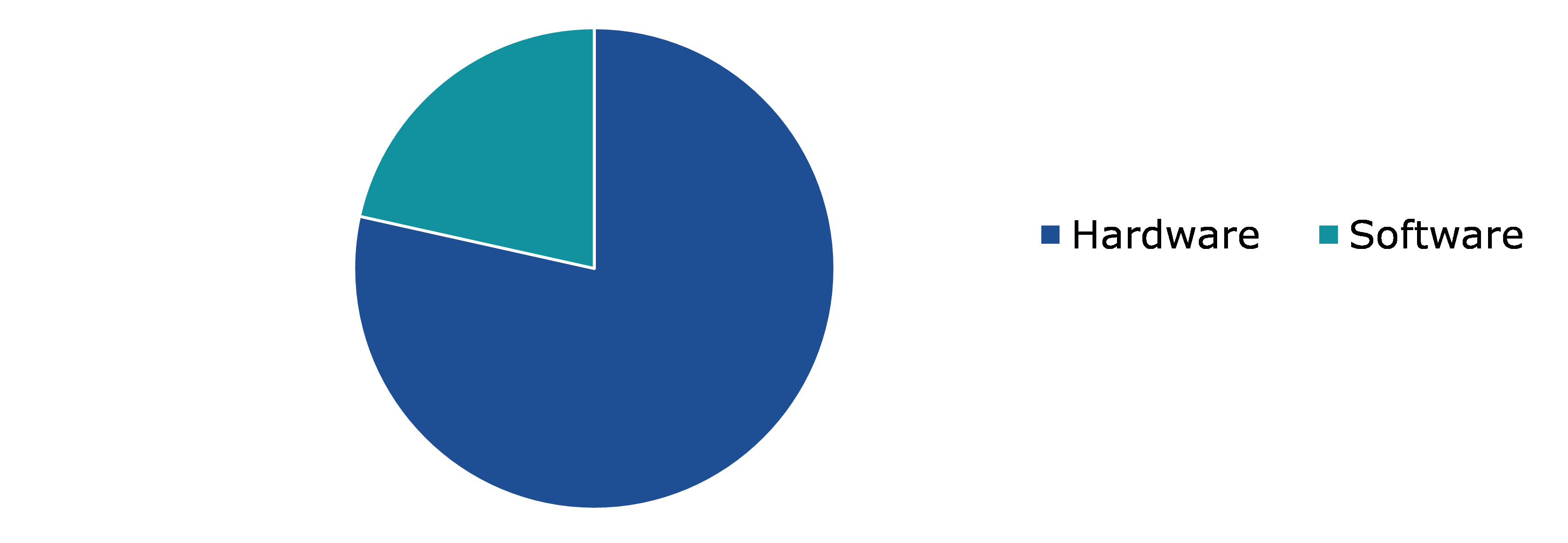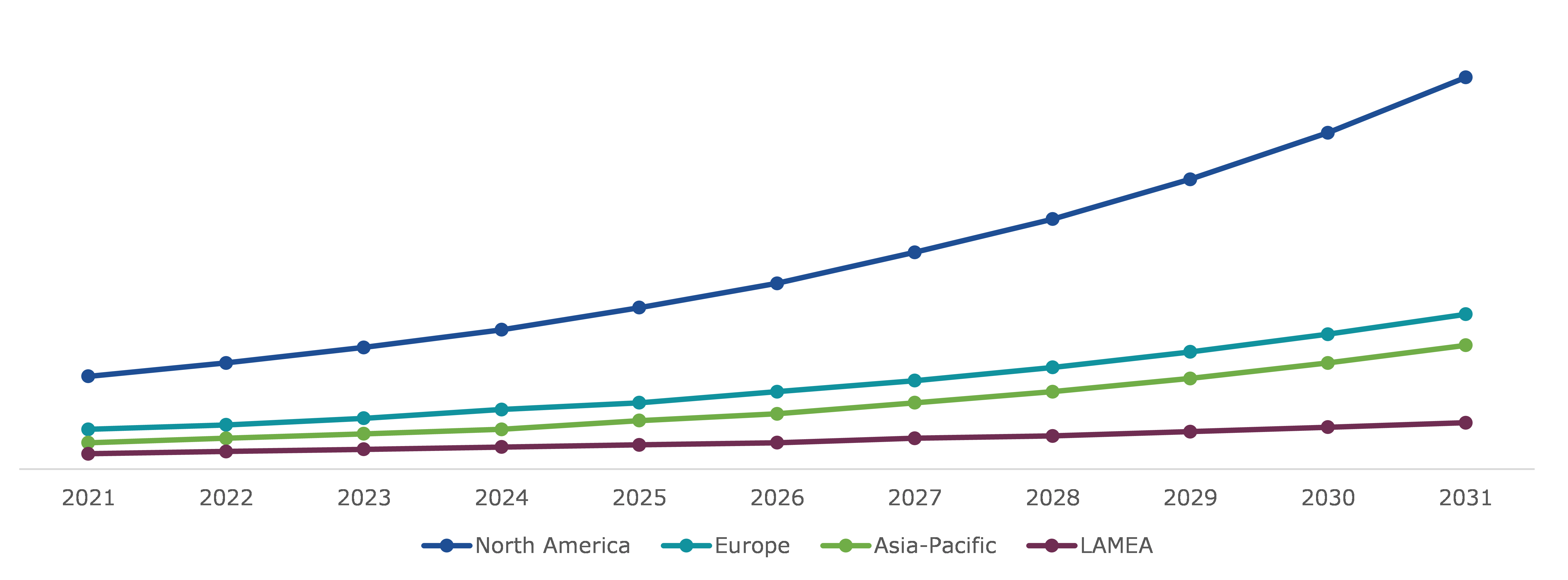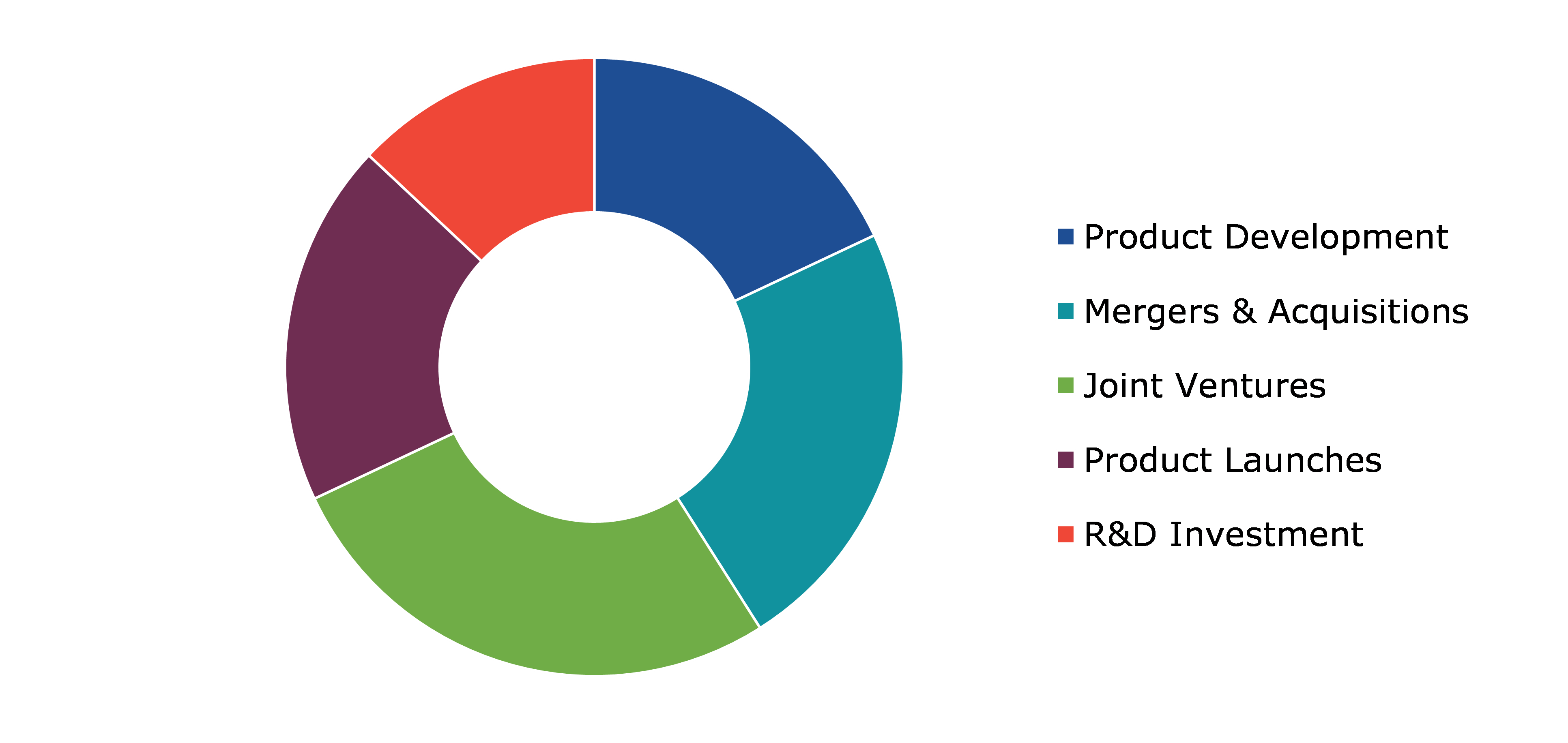Light Field Market Report
RA05966
Light Field Market by Technology (Hardware and Software), Industry Vertical (Media & Entertainment, Healthcare, Architecture & Real Estate, Industrial, and Others), and Region (North America, Europe, Asia-Pacific, and LAMEA): Global Opportunity Analysis and Industry Forecast, 2022-2031
Global Light Field Market Analysis
The Global Light Field Market Size was $79.0 million in 2021 and is predicted to grow with a CAGR of 15.3%, by generating a revenue of $323.0 million by 2031.
Global Light Field Market Synopsis
Light field market is gaining popularity across automotive, media & entertainment, and other sectors as light field offers several advantages such as accurate information, in-depth visualization, and interaction with the real world. For instance, in robotics sector, the light field cameras help robots with accurate information about their environment for better navigation and interaction with the world. Similarly, in autonomous vehicles, the light field helps in providing in-depth and accurate information regarding obstacles or objects for autonomous vehicles. This is made possible with the help of cameras that facilitate better detection of obstacles to navigate the complex environment. Light field technology helps in creating realistic and interactive 3D visualizations of architectural designs that help the architects as well as designers in communicating their ideas to the client. Light field technology can be utilized to produce more realistic and interactive educational and training experiences, such as medical simulators. Light field technology can be used to capture and display more realistic and immersive live event footage, such as sports games or concerts. These factors are anticipated to boost the light field market share in the coming years.
However, the global light field market is anticipated to be hampered by low levels of technological penetration and high costs associated with the technology in developing regions. Additionally, high spatial resolution and computational requirements are anticipated to restrain the light field market growth in the coming years. For instance, capturing and processing of light field data requires high computational resources that may reduce the spatial resolution of an image thereby affecting the image quality.
Light field cameras offer precise 3D information about the surroundings in which they operate such as computational photography, virtual & augmented reality, computer vision, and others., Also, these cameras hold huge potential across the logistics, manufacturing, and transportation sector. Light field technology has various applications in the world of entertainment. For example, light field displays may offer enhanced and immersive movie experiences and light field cameras can be used to create realistic and precise sets of film and television production. Light field technology holds potential for use in a variety of applications giving a huge opportunity for the market to grow and expand into new sectors and applications. The utilization of light fields in autonomous cars and robots is one of these potential uses. These factors are anticipated to generate excellent opportunities in the light field industry during the forecast period.
According to regional analysis, the North America light field market accounted for a dominant market size in 2021. The need for immersive and engaging multimedia experiences, continuous development and advancements in light field technology, and the emergence of novel applications and use cases across an array of industries are all expected to drive further growth in the North American light field market in the coming years.
Light Field Overview
Light field technology is defined as a form of imaging technology that records the direction as well as the intensity of light rays. This enables the production of more immersive and engaging visual experiences, as viewers may walk about the scene and see objects from various angles. Light field technology works by capturing light rays from numerous directions using a number of cameras or sensors. These rays are subsequently processed and merged to form a computer model of the scene that may be displayed on a light field display.
COVID-19 Impact on Global Light Field Market
The arts, culture, and creative economy have all been significantly impacted by the COVID-19 problem. The COVID-19 dilemma has had a huge influence on the creative business, which includes companies in the film, advertising, and fashion industries. According to the IATSE (International Alliance of Theatrical Stage Employees), which has 150,000 members, the pandemic has resulted in the loss of 120,000 jobs.
The market for light field has suffered as a result of the pandemic. It is estimated that light field technology had cost the media and entertainment sector a loss of more than $20 billion during pandemic due to widespread closures of cinemas around the world, as well as countless release and event postponements, as well as production chaos. On the other hand, data from CIPA (Camera & Imaging Products Association) shows a 25.9% drop in volume and a 12.5% drop in value in camera manufacturing. It claims that the COVID-19 has had a detrimental effect on manufacturers of various imaging technologies, including light field and cameras during the pandemic.
Growing Applications of Light Field Technology to Drive the Market Growth
One of the primary drivers of the light field market is the demand for immersive and realistic media experiences. Consumers are increasingly looking for new methods to engage themselves, such as through movies, video games, and virtual reality experiences. In movies and video games, the light field can capture complete details regarding color, intensity and direction of light for creating realistic and immersive experiences to the users. This allows for more lifelike and detailed photos and videos.
A light field camera can capture not just the color and amount of light in a scene, but additionally its direction and position. Thus, light field cameras facilitate the production of videos and pictures that can be viewed from many angles or perspectives. This offers the viewers an immersive and engaging experience. Light field displays, such as those produced by Light Field Lab, the leading U.S.-based company, are offering more realistic and lifelike 3D visuals that can be viewed without glasses or other specialized equipment.
To know more about global light field market drivers, get in touch with our analysts here.
High Cost of Technology to Restrain the Market Growth
The main potential restraint for the light field market is the high cost of the technology. Currently, light field cameras, displays, and software can be significantly more expensive than traditional 2D imaging solutions. This higher cost can limit the adoption of light field technology by consumers and businesses, particularly in price-sensitive markets. For example, the hardware required to capture and display light field data can be complex and specialized, which can increase production costs. Additionally, the software required to process and render light field data can be computationally intensive, requiring powerful and expensive computing equipment.
Use of Light Field as VR/AR Technology to Drive Excellent Opportunities
The increasing popularity of both augmented and virtual reality (AR/VR) is an important factor to boost the light field industry growth. Users may engage with digital content in a more engaging and realistic manner which is made possible by VR/AR technologies, and light field technology can help enhance this experience by giving more accurate and comprehensive visual information. VR/AR experiences, for example, are becoming more prevalent in the gaming industry, and light field technology can create more realistic and lifelike images that can aid to enhance gameplay.
This can include increased lighting and shadow accuracy, depth perception, and high-quality images. Furthermore, in architecture and design, virtual models and simulations of buildings and other structures can be created, allowing designers and architects to visualize and test their concepts before construction begins. Light field technology can improve these models by giving more useful and precise visual data.
To know more about global light field market opportunities, get in touch with our analysts here.
Global Light Field Market, by Technology
Based on technology, the market has been divided into hardware and software. Among these, the hardware sub-segment accounted for the highest market share in 2021, whereas the software sub-segment is estimated to show the fastest growth during the forecast period.
Global Light Field Market Share, by Technology, 2021
Source: Research Dive Analysis
The hardware sub-type had a dominant market share in 2021. The hardware sub-segment of the light field market includes devices and equipment used to capture, process, and display light field data. This includes cameras, sensors, processors, and displays. The fundamental components of light field hardware are devices that capture data for the development of light field photos and films. Light field cameras, which are a part of hardware devices are an essential component of the hardware because they gather the data required to make light field photos and videos. These cameras collect multiple viewpoints of a scene via an array of micro-lenses or mirrors, which are then merged to generate a three-dimensional representation of the scene. Light field sensors are widely used to capture different light properties, such as intensity, color, and direction, that are needed to build a light field image or video.
The software segment is anticipated to show the fastest growth by 2031. The media & entertainment industry's animation and VFX sectors have seen an increase in demand for the light field market's software sub-segment. For instance, the Light Field Lab, leading company operating in this market, offers a software development kit (SDK) that helps in creating and rendering the light field photographs. Light field software has applications across various sectors namely automotive, aerospace, healthcare, gaming & film industry, and others. Light field cameras have the ability to adapt and customize to various requirements and use cases which is anticipated to generate excellent growth opportunities in the market in the coming years.
Global Light Field Market, by Industry Vertical
Based on industry vertical, the market has been divided into media & entertainment healthcare, architecture & real estate, industrial, and others. Among these, the media & entertainment sub-segment accounted for highest revenue share in 2021.
Global Light field Market Size, by Industry Vertical, 2021
Source: Research Dive Analysis
The media & entertainment sub-segment accounted for the highest market share in 2021. Light field technology is quite popular in the media & entertainment sector as it helps in creating realistic and engaging experiences for the users. In the media & entertainment sector, light field technology is used in movies, games, and other digital media platforms. This technology can be used to record information regarding surroundings in a 3D space and gaming environment. The use of light field technology in 3D gaming offers 3D visualizations of the gaming environment for more intricate gaming interactions. Light field technology holds potential to transform the entire film and digital media industry. Light field cameras used in media and entertainment help in collecting information about images from different viewpoints and perspectives. This can help in exploring the 3D environment and visualizations thereby offering new and interactive experience to the audience.
Global Light Field Market, Regional Insights
The light field market was investigated across North America, Europe, Asia-Pacific, and LAMEA.
Global Light Field Market Size & Forecast, by Region, 2021-2031 (USD Million)
Source: Research Dive Analysis
The Market for Light Field in North America to be the Most Dominant
The North America light field market accounted for dominant market share in 2021 and is anticipated to grow at a significant rate during the forecast period. This growth is majorly attributed to the presence of leading light field companies that are headquartered in the U.S. For example, many of the major businesses and research institutions involved in the development and commercialization of light field technology are based in the U.S. These companies have a robust supplier, technology, and service provider network. Light Field Lab, AYE3D, Optics, Quidient, Avegant, FoVI 3D, and others are among the leading light field enterprises in North America. Several reasons drive the North American market for light field technology, including the region's increasing need for immersive and interactive media experiences. Light field technology is in high demand in games, movies, and other kinds of digital media, as well as in industries such as healthcare, automotive, and aerospace.
Competitive Scenario in the Global Light Field Market
Investment and agreement are common strategies followed by major market players. For instance, in May 2020, the diagnosis of coronary artery disease was enhanced by 3D fusion imaging which included the use of light field technology. This method aids in quicker and more precise identification of coronary artery narrowing. Devices that incorporate this technology are user-friendly and hence of high utility for therapeutic and diagnostic purposes in the healthcare industry.
Source: Research Dive Analysis
Some of the leading light field market players are Japan Display, Fathom Holografika, Light Field Lab, K-Lens, CREAL, AYE3D, Photonic Crystal, Looking Glass Factory, Dimenco, and Wooptix.
| Aspect | Particulars |
| Historical Market Estimations | 2021 |
| Base Year for Market Estimation | 2021 |
| Forecast Timeline for Market Projection | 2022-2031 |
| Geographical Scope | North America, Europe, Asia-Pacific, LAMEA |
| Segmentation by Technology |
|
| Segmentation by Industry Vertical |
|
| Key Companies Profiled |
|
Q1. What is the size of the global light field market?
A. The size of the global light field market was over $79.0 million in 2021 and is projected to reach $323.0 million by 2031.
Q2. Which are the major companies in the light field market?
A. Japan Display, Fathom Holografika, Light Field Lab, K-Lens, are some of the key players in the global light field market.
Q3. Which region, among others, possesses greater investment opportunities in the near future?
A. The North America region possesses great investment opportunities for investors to witness the most promising growth in the future.
Q4. What will be the growth rate of the Asia-Pacific light field market?
A. Asia-Pacific light field market is anticipated to grow at 17.0% CAGR during the forecast period.
Q5. What are the strategies opted by the leading players in this market?
A. Agreement and investment are the two key strategies opted by the operating companies in this market.
Q6. Which companies are investing more on R&D practices?
A. Japan Display, Fathom Holografika, Light Field Lab, K-Lens, are the companies investing more on R&D activities for developing new products and technologies.
1.Research Methodology
1.1.Desk Research
1.2.Real time insights and validation
1.3.Forecast model
1.4.Assumptions and forecast parameters
1.5.Market size estimation
1.5.1.Top-down approach
1.5.2.Bottom-up approach
2.Report Scope
2.1.Market definition
2.2.Key objectives of the study
2.3.Report overview
2.4.Market segmentation
2.5.Overview of the impact of COVID-19 on Global light field market
3.Executive Summary
4.Market Overview
4.1.Introduction
4.2.Growth impact forces
4.2.1.Drivers
4.2.2.Restraints
4.2.3.Opportunities
4.3.Market value chain analysis
4.3.1.List of raw material suppliers
4.3.2.List of manufacturers
4.3.3.List of distributors
4.4.Innovation & sustainability matrices
4.4.1.Technology matrix
4.4.2.Regulatory matrix
4.5.Porter’s five forces analysis
4.5.1.Bargaining power of suppliers
4.5.2.Bargaining power of consumers
4.5.3.Threat of substitutes
4.5.4.Threat of new entrants
4.5.5.Competitive rivalry intensity
4.6.PESTLE analysis
4.6.1.Political
4.6.2.Economical
4.6.3.Social
4.6.4.Technological
4.6.5.Legal
4.6.6.Environmental
4.7.Impact of COVID-19 on light field market
4.7.1.Pre-covid market scenario
4.7.2.Post-covid market scenario
5.Light Field Market Analysis, by Technology
5.1.Overview
5.2.Hardware
5.2.1.Definition, key trends, growth factors, and opportunities
5.2.2.Market size analysis, by region
5.2.3.Market share analysis, by country
5.3.Software
5.3.1.Definition, key trends, growth factors, and opportunities
5.3.2.Market size analysis, by region
5.3.3.Market share analysis, by country
5.4.Research Dive Exclusive Insights
5.4.1.Market attractiveness
5.4.2.Competition heatmap
6.Light Field Market Analysis, by Industry Vertical
6.1.Media & Entertainment
6.1.1.Definition, key trends, growth factors, and opportunities
6.1.2.Market size analysis, by region
6.1.3.Market share analysis, by country
6.2.Healthcare
6.2.1.Definition, key trends, growth factors, and opportunities
6.2.2.Market size analysis, by region
6.2.3.Market share analysis, by country
6.3.Architecture and Real Estate
6.3.1.Definition, key trends, growth factors, and opportunities
6.3.2.Market size analysis, by region
6.3.3.Market share analysis, by country
6.4.Industrial
6.4.1.Definition, key trends, growth factors, and opportunities
6.4.2.Market size analysis, by region
6.4.3.Market share analysis, by country
6.5.Others (Education & training, defense)
6.5.1.Definition, key trends, growth factors, and opportunities
6.5.2.Market size analysis, by region
6.5.3.Market share analysis, by country
6.6.Research Dive Exclusive Insights
6.6.1.Market attractiveness
6.6.2.Competition heatmap
7.Light Field Market, by Region
7.1.North America
7.1.1.U.S.
7.1.1.1.Market size analysis, by Technology
7.1.1.2.Market size analysis, by Industry Vertical
7.1.2.Canada
7.1.2.1.Market size analysis, by Technology
7.1.2.2.Market size analysis, by Industry Vertical
7.1.3.Mexico
7.1.3.1.Market size analysis, by Technology
7.1.3.2.Market size analysis, by Industry Vertical
7.1.4.Research Dive Exclusive Insights
7.1.4.1.Market attractiveness
7.1.4.2.Competition heatmap
7.2.Europe
7.2.1.Germany
7.2.1.1.Market size analysis, by Technology
7.2.1.2.Market size analysis, by Industry Vertical
7.2.2.UK
7.2.2.1.Market size analysis, by Technology
7.2.2.2.Market size analysis, by Industry Vertical
7.2.3.France
7.2.3.1.Market size analysis, by Technology
7.2.3.2.Market size analysis, by Industry Vertical
7.2.4.Spain
7.2.4.1.Market size analysis, by Technology
7.2.4.2.Market size analysis, by Industry Vertical
7.2.5.Italy
7.2.5.1.Market size analysis, by Technology
7.2.5.2.Market size analysis, by Industry Vertical
7.2.6.Rest of Europe
7.2.6.1.Market size analysis, by Technology
7.2.6.2.Market size analysis, by Industry Vertical
7.2.7.Research Dive Exclusive Insights
7.2.7.1.Market attractiveness
7.2.7.2.Competition heatmap
7.3.Asia-Pacific
7.3.1.China
7.3.1.1.Market size analysis, by Technology
7.3.1.2.Market size analysis, by Industry Vertical
7.3.2.Japan
7.3.2.1.Market size analysis, by Technology
7.3.2.2.Market size analysis, by Industry Vertical
7.3.3.India
7.3.3.1.Market size analysis, by Technology
7.3.3.2.Market size analysis, by Industry Vertical
7.3.4.Australia
7.3.4.1.Market size analysis, by Technology
7.3.4.2.Market size analysis, by Industry Vertical
7.3.5.South Korea
7.3.5.1.Market size analysis, by Technology
7.3.5.2.Market size analysis, by Industry Vertical
7.3.6.Rest of Asia-Pacific
7.3.6.1.Market size analysis, by Technology
7.3.6.2.Market size analysis, by Industry Vertical
7.3.7.Research Dive Exclusive Insights
7.3.7.1.Market attractiveness
7.3.7.2.Competition heatmap
7.4.LAMEA
7.4.1.Brazil
7.4.1.1.Market size analysis, by Technology
7.4.1.2.Market size analysis, by Industry Vertical
7.4.2.Saudi Arabia
7.4.2.1.Market size analysis, by Technology
7.4.2.2.Market size analysis, by Industry Vertical
7.4.3.UAE
7.4.3.1.Market size analysis, by Technology
7.4.3.2.Market size analysis, by Industry Vertical
7.4.4.South Africa
7.4.4.1.Market size analysis, by Technology
7.4.4.2.Market size analysis, by Industry Vertical
7.4.5.Rest of LAMEA
7.4.5.1.Market size analysis, by Technology
7.4.5.2.Market size analysis, by Industry Vertical
7.4.6.Research Dive Exclusive Insights
7.4.6.1.Market attractiveness
7.4.6.2.Competition heatmap
8.Competitive Landscape
8.1.Top winning strategies, 2021
8.1.1.By strategy
8.1.2.By year
8.2.Strategic overview
8.3.Market share analysis, 2021
9.Company Profiles
9.1.Japan Display
9.1.1.Overview
9.1.2.Business segments
9.1.3.Product portfolio
9.1.4.Financial performance
9.1.5.Recent developments
9.1.6.SWOT analysis
9.2.Fathom Holografika
9.2.1.Overview
9.2.2.Business segments
9.2.3.Product portfolio
9.2.4.Financial performance
9.2.5.Recent developments
9.2.6.SWOT analysis
9.3.Light Field Lab
9.3.1.Overview
9.3.2.Business segments
9.3.3.Product portfolio
9.3.4.Financial performance
9.3.5.Recent developments
9.3.6.SWOT analysis
9.4.K-Lens
9.4.1.Overview
9.4.2.Business segments
9.4.3.Product portfolio
9.4.4.Financial performance
9.4.5.Recent developments
9.4.6.SWOT analysis
9.5.CREAL
9.5.1.Overview
9.5.2.Business segments
9.5.3.Product portfolio
9.5.4.Financial performance
9.5.5.Recent developments
9.5.6.SWOT analysis
9.6.AYE3D
9.6.1.Overview
9.6.2.Business segments
9.6.3.Product portfolio
9.6.4.Financial performance
9.6.5.Recent developments
9.6.6.SWOT analysis
9.7.Photonic Crystal
9.7.1.Overview
9.7.2.Business segments
9.7.3.Product portfolio
9.7.4.Financial performance
9.7.5.Recent developments
9.7.6.SWOT analysis
9.8.Looking Glass Factory
9.8.1.Overview
9.8.2.Business segments
9.8.3.Product portfolio
9.8.4.Financial performance
9.8.5.Recent developments
9.8.6.SWOT analysis
9.9.Dimenco
9.9.1.Overview
9.9.2.Business segments
9.9.3.Product portfolio
9.9.4.Financial performance
9.9.5.Recent developments
9.9.6.SWOT analysis
9.10.Wooptix
9.10.1.Overview
9.10.2.Business segments
9.10.3.Product portfolio
9.10.4.Financial performance
9.10.5.Recent developments
9.10.6.SWOT analysis
In recent years, a revolutionary technology called the Light Field has been making waves in the world of imaging. This cutting-edge technology can capture not only the intensity and color of light but also its direction, allowing for unprecedented control and manipulation of images. Light field refers to the complex and rich data set that describes the rays of light traveling through a particular scene. Unlike traditional photography, which captures light intensity at a single point, the light field captures light rays from multiple directions. This results in a three-dimensional representation of the scene, allowing for post-capture focusing, refocusing, and the generation of synthetic viewpoints.
The applications of light field technology are vast and diverse. In the field of photography, light field cameras enable photographers to capture images without worrying about precise focusing, as the focus can be adjusted during post-processing. Beyond photography, light field technology has promising implications for virtual and augmented reality. By capturing the light field of a real-world scene, virtual environments can be seamlessly integrated with the physical world, leading to more immersive and realistic experiences. Additionally, light field displays can reproduce realistic 3D content without the need for specialized glasses.
Forecast Analysis of the Global Light Field Market
According to the report published by Research Dive, the global light field market is anticipated to garner a revenue of $323.0 million and grow at a stunning CAGR of 15.3% during the analysis timeframe from 2022 to 2031. The major players of the market include AYE3D, Photonic Crystal, CREAL, Looking Glass Factory, K-Lens, Dimenco, Light Field Lab, Japan Display, Wooptix, Fathom Holografika, and many more.
The increasing preference of consumers for new methods to engage themselves such as through video games, movies, virtual reality experiences, and many more is expected to foster the growth of the light field market during the analysis timeframe. Besides, the increasing use of light field cameras to produce videos and pictures that can be viewed from many angles or perspectives is expected to amplify the growth of the market over the forecast period. Moreover, the growing use of light fields such as VR/AR technology to engage digital content more engagingly and realistically and enhance the experience by providing accurate and comprehensive visual information is expected to create wide growth opportunities for the market during the estimated period. However, the high cost of the light field technology is likely to hinder the light field market’s growth throughout the analysis period.
Light Field Market Key Developments
The key companies operating in the light field market are adopting various growth strategies & business tactics such as partnerships, collaborations, mergers & acquisitions, and launches to maintain a robust position in the overall market, which is subsequently helping the global market to grow exponentially.
For instance:
- In January 2021, Fathom Optics, a renowned software development company, announced the launch of its light field software platform. This platform would help bring printed 3D and motion graphics that would aid packaging without requiring specialty inks or substrates.
- In June 2021, Wooptix, a leading developer of light field and wavefront phase imaging platforms, announced its partnership with poLight®, a global player in tunable optics. With this partnership, the companies aimed to expand their advancement in the capabilities of light field-based camera systems for portable devices such as laptops, tablets, wearables, and many more.
- In December 2022, Photonis, a leading France-based supplier of light intensification systems for defense applications, announced its acquisition of Xenics, a leading designer and manufacturer of infrared sensors, cores, and cameras. With this acquisition, the companies aimed to expand their manufacturing capabilities by leveraging modern imaging technologies.
Most Profitable Region
The North America region of the light field market held the highest market share in 2021. This is mainly due to the existence of the leading light field companies across the region. Moreover, the increasing need for immersive and interactive media experiences among individuals and the rising research and development activities for the commercialization of light field technology in the region is expected to boost the growth of the regional market over the estimated timeframe.
Covid-19 Impact on the Global Light Field Market
The rise of the Covid-19 pandemic has devastated the light field market, likewise various other industries. The closure of cinemas across the globe and the postponements of the release of cinemas and events during the pandemic have further decreased the demand for light field technology over that period. In addition, the drop in the demand for camera manufacturing has further declined the growth of the light field market throughout the crisis.
Personalize this research
- Triangulate with your own data
- Request your format and definition
- Get a deeper dive on a specific application, geography, customer or competitor
- + 1-888-961-4454 Toll - Free
- support@researchdive.com






